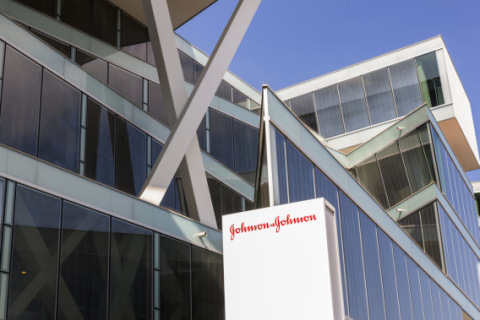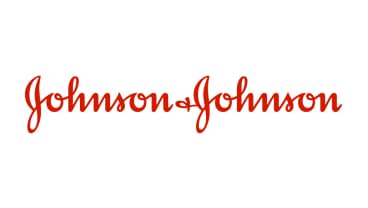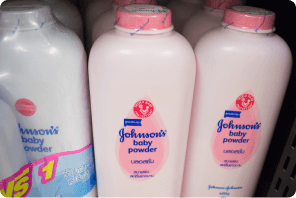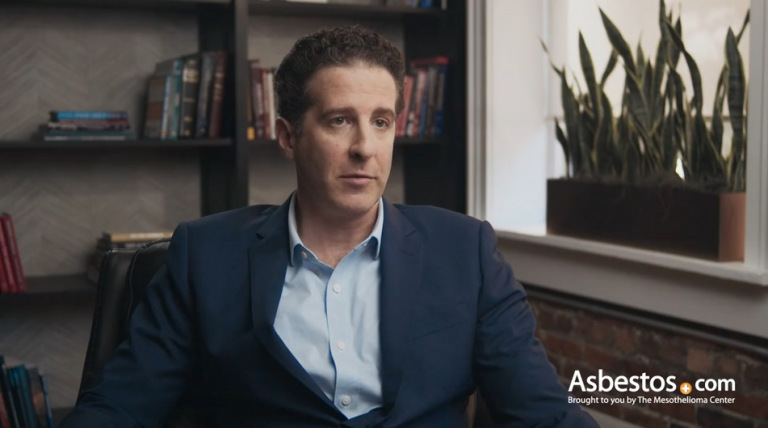
Johnson & Johnson
Johnson & Johnson introduced baby powder made of crushed talc. This mineral occurs with asbestos in the earth, which has led to talc product contamination. J&J has lost multimillion-dollar lawsuits related to ovarian cancer and mesothelioma caused by baby powder.

Johnson & Johnson’s Talcum Powder and Asbestos

Court documents have revealed Johnson & Johnson knew its talc contained asbestos as early as the 1950s. By 2018, J&J was paying out multimillion-dollar verdicts over asbestos exposure from contaminated talcum powder.
That year, a Reuters investigative report exposed company knowledge tracing decades ago about asbestos contamination in J&J’s talc products. Tests from different labs found asbestos in J&J talc from 1971 to the early 2000s, but the company failed to report the findings to the U.S. Food and Drug Administration.
In September 2024, J&J’s latest talc subsidiary filed for Chapter 11 bankruptcy protection in Texas. It is proposing a $10 billion trust fund to handle talc claims. The company first filed in 2021 and had previously set aside nearly $4 billion to cover talc lawsuits. These lawsuits claim asbestos exposure from its iconic Johnson’s Baby Powder causes cancer, including ovarian cancer and mesothelioma. To date, courts have awarded billions of dollars to plaintiffs.
J&J Discontinues Talc Baby Powder
Johnson & Johnson discontinued talcum powder sales throughout the world in 2023. Before that decision, the company switched Johnson’s Baby Powder’s main ingredient from talc to cornstarch in the U.S. It ended sales of talc-based baby powder in the U.S. and Canada in 2020 but continued to sell it internationally.
Retailers throughout the U.S. pulled J&J’s talc-based baby powder from shelves in October 2019 after the FDA found asbestos in one of the containers. The container was part of a 33,000-bottle batch that the company voluntarily recalled on Oct. 18, 2019.
The discovery occurred when the FDA reviewed 43 cosmetic samples and found asbestos contamination in 9 of them. The FDA conducted more tests of cosmetics products in 2022 and didn’t find asbestos in 50 new samples.
Cancers Linked to Johnson & Johnson’s Baby Powder
Talc has been linked to mesothelioma, ovarian cancer and lung cancer. In July 2024, the World Health Organization’s International Agency for Research on Cancer updated its stance on talc and stated that it “probably” causes cancer.
For years, scientists and companies have known that many sources of talc are naturally contaminated with asbestos, the primary cause of mesothelioma. The two minerals often occur in the same geological formations.
Talc continues to pose a risk to consumers due to its historic contamination with asbestos. Companies have known for years about this danger and how exposure can lead to cancer. Understanding the hazards of these products can help people protect themselves.
Talc dust can irritate tissue in the respiratory and reproductive systems. Talc contaminated with asbestos causes cancer in these tissues.
New research published in the Journal of Clinical Oncology in May 2024 found that applying talcum powder to the genitals can cause ovarian cancer. Research has shown mesothelioma in talc workers and talcum powder users, and studies have documented excess cases of lung cancer in talc miners throughout the world.
J&J Denied Talcum Powder-Cancer Connection
J&J, like many other companies accused of using asbestos in their products, continues to publicly deny that its talcum powder products cause cancer. However, documents unsealed in court revealed company executives were aware of asbestos fibers in its talcum powder as early as the 1950s.
Internal company reports highlighted the need to suppress concerns over asbestos contamination at talc mines in Vermont and Italy. Tests conducted in the latter half of the 20th century revealed asbestos in J&J talc, which the company covered up, failing to report the contamination.
Some of the talc originated in the Windsor Materials talc mine in Vermont, where one official recommended adding citric acid to help hide the presence of chrysotile asbestos fibers. Now, juries are holding Johnson & Johnson accountable for the asbestos-related cancers its products caused.

Start filing your claim today so you and your family get the compensation they deserve.
Start Your ClaimJ&J Talcum Powder Lawsuits
The company reportedly spent approximately $1 billion on legal defenses of talc claims and was facing 61,000 J&J asbestos lawsuits when claimants approved a plan to settle talc liabilities in August 2024. Settlements and verdicts have cost the company an additional $3.5 billion. According to a regulatory filing with the Securities and Exchange Commission, Johnson & Johnson had set aside $3.9 billion for talc-related litigation in February 2021.
- March 2025: J&J went back to court in 2025 in Texas. They asked the judge to approve a $10 billion trust fund. This money would establish a trust for people with talc-related gynecological cancers.
- August 2024: J&J’s latest plan to resolve its talc liabilities received enough votes from claimants to proceed with another bankruptcy filing. This time, it will file in Texas instead of New Jersey, where courts rejected 2 prior plans.
- July 2024: Johnson & Johnson proposed a $505M settlement with mining companies Cyprus Mines Corporation and Imerys Talc America. If approved, a portion would go toward a joint trust for talc claimants.
- July 2024: A U.S. district judge dismissed J&J’s libel claim against a scientist who published a paper about talc-based products and cancer. The company has filed lawsuits against 3 other scientists for publishing studies linking its talc products to cancer.
- June 2024: An Oregon jury ordered J&J to pay $260M to Kyung Lee, who claimed exposure to Johnson’s Baby Powder caused her mesothelioma diagnosis.
- April 2024: An Illinois jury ordered J&J and Kenvue to pay $45M to the family of Theresa Garcia, who died of mesothelioma following exposure to J&J baby powder.
An advocacy group representing cancer victims accused J&J of withdrawing $61.5B from the subsidiary’s initial funding agreement to signal financial distress and justify the J&J bankruptcy filing. The appeals court ruling found the company didn’t file for bankruptcy in good faith because it still had access to those assets.
J&J’s Response to Talc Asbestos Lawsuits
In February 2025, Johnson & Johnson returned to court seeking approval of another trust fund plan. The new plan includes nearly $10 billion to establish a trust fund for gynecological cancers. The company is facing allegations that it filed for bankruptcy in bad faith. Opposers say some votes were changed to make the proposed settlement plan pass. Now, a judge is deciding if the company acted honestly.
In August 2024, J&J received enough support to establish a trust fund with $6.475B to settle 99.75% of the remaining asbestos talc lawsuits it faces in the U.S. The company says it has resolved most J&J mesothelioma lawsuits outside of bankruptcy court. The new bankruptcy plan will settle talc lawsuits involving ovarian and other gynecological cancers.
The most recent bankruptcy plans have proposed a trust fund that excludes mesothelioma claims. A previously rejected plan proposed an $8.9 billion trust fund to resolve mesothelioma and gynecological cancer claims. J&J also faces class action lawsuits related to medical expenses for talc injuries and claims its bankruptcy filings are fraudulent.
Johnson & Johnson is really trying to take advantage of the bankruptcy code for asbestos. Would create a terrible precedent for big successful companies to just exit litigation.
Johnson & Johnson has created two subsidiaries to hold its talc liabilities. In August 2024, it created Red River Talc to execute its most recent complex legal maneuvers. In October 2021, it created its first talc subsidiary, LTL Management, which soon filed for Chapter 11 bankruptcy. This action halted all outstanding and unresolved talc lawsuits against the company.
In February 2022, a court gave preliminary approval of the company’s original bankruptcy plan to fund a trust with $2B. The plan began to unravel by September of that year when attorneys representing talc victims challenged it before the U.S. Court of Appeals for the Third Circuit. The court rejected the original bankruptcy plan in January 2023.
J&J Pays $700M to Settle Marketing Lawsuit
In June 2024, Johnson & Johnson offered 42 U.S. states and Washington, D.C., a $700M settlement to resolve accusations that the company misled consumers. Officials in those states launched an investigation into J&J’s marketing practices of its talc-based products.
The states accused J&J of convincing people that its products were safe. J&J admitted no wrongdoing and denied violating the law by settling.
J&J’s Public Perception and Brand Image
Johnson & Johnson’s brand, once known for its commitment to health, safety and trust, has faced a significant blow to its image following reports of asbestos contamination in its baby powder. The contamination raised serious consumer concerns, leading to widespread scrutiny and legal battles.
According to YouGov BrandIndex, a market research firm that tracks consumer attitudes, J&J’s brand reputation has fluctuated significantly in recent years. The company’s development of a COVID-19 vaccine positively impacted public perception. However, the brand has suffered from reports of asbestos contamination, faulty pelvic mesh devices and the company’s role in the opioid epidemic.
Market experts speculate that Johnson & Johnson ended talcum powder sales in 2023 to restore its brand image and avoid future talc liabilities. That same year, the company replaced its 135-year-old logo. Asbestos contamination and other controversies have significantly affected J&J’s brand. Restoring the company’s image will require transparency and a continued focus on consumer safety.
Recommended Reading







